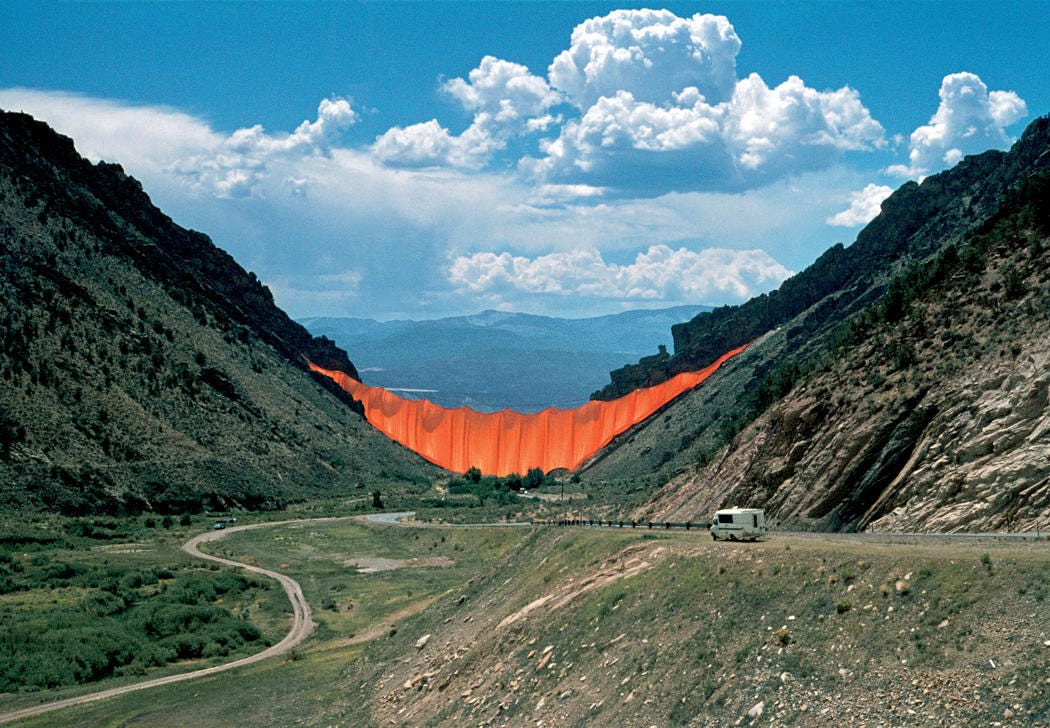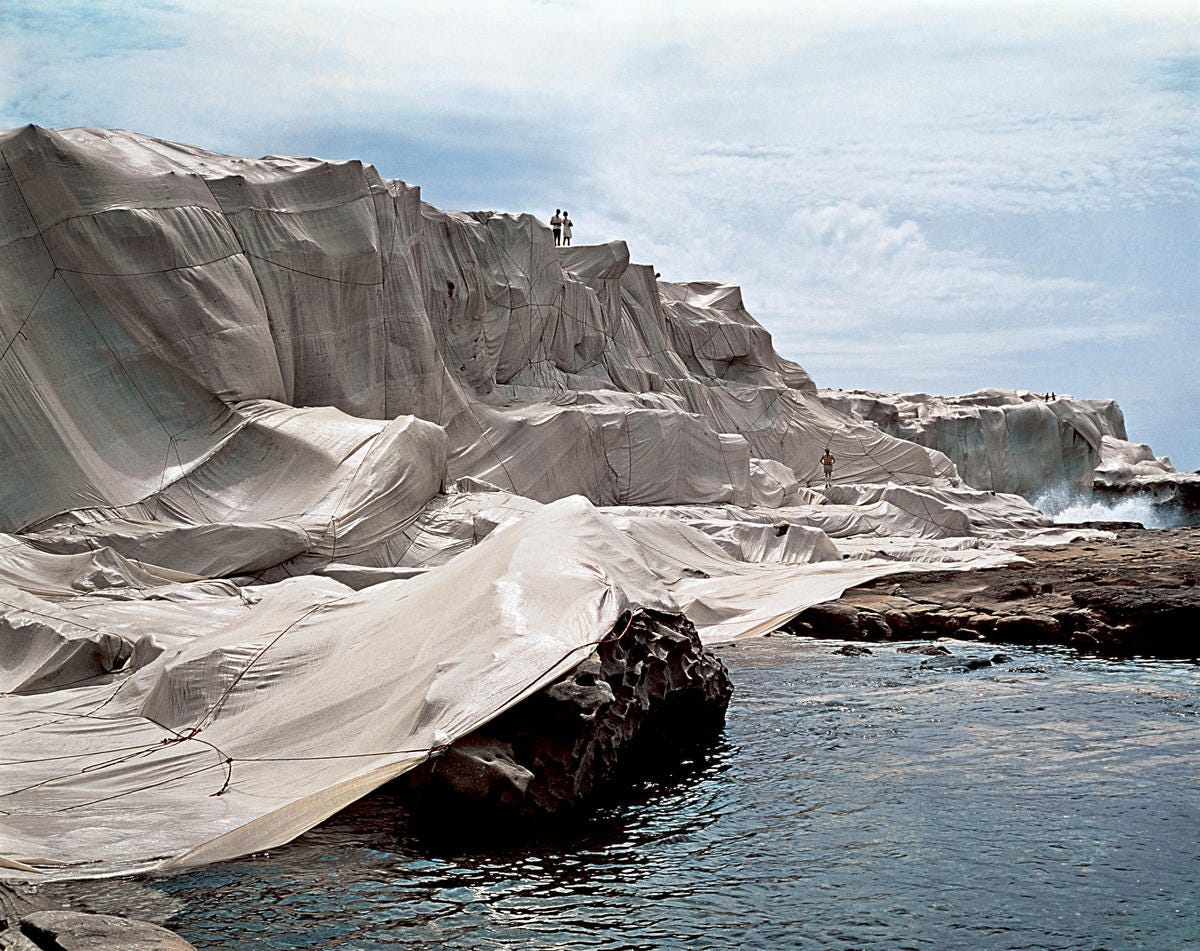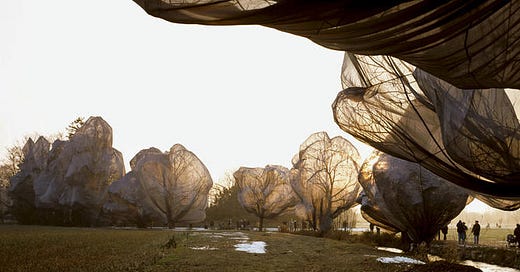Land Art: Christo & Jean-Claude

“Wrapped Trees” (1997-1998), Photograph: Wolgang Volz
We started this week reflecting on the life and work of Christo & Jean-Claude, which led us to an exploration of land art in a search for what the artists were actually doing. It was more than sculpture, it was participative, it worked with the environment, transforming it and altering our relation to it. On first blush, it seems that their work could be considered land art - but they didn’t consider themselves a part of that movement, and frankly, it’s difficult to make the case.

“Valley Curtain” (1970-1972), Photograph: Wolfgang Volz
While their work is site-specific and uses the landscape as a canvas, the work wasn’t particularly of the earth in the way that the leading figures of land art were. Even works such as “Valley Curtain” (1970-1972), a piece of orange nylon fabric stretched between two mountains, was not really about the mountains or the valleys or the landscape beyond - it was about jarring you, making you see the world in a different way. It was environmental art, as it was situated in a specific place, but it was not land art. Same for “Wrapped Trees” (header) or “Surrounded Islands” (below)

“Surrounded Islands” (1980-1983), Photograph: Wolfgang Volz
Second, there is nothing particularly environmental or ecological about Christo & Jean-Claude’s works, regardless of their location. There is a glimmer of political activism and perhaps environmentalism in their works in the 1960s, but it is often a stretch to ascribe a motive to these works other than to use scale and color and the absurd to jolt the viewer into reconsidering how they see the world. Indeed, their work tends to be more about translating a vision into reality, and about how complex that can be - for Christo, the fun of the art was the realization of it - dealing with contractors and government officials and engineers in order to create something that previously only existed in the realm of thought.

“Wrapped Coast” (1968-1969), Photograph: Shunk-Kender
Christo & Jean-Claude also did not accept public money for art work, but instead formed private corporations and self-funded their work through the sales of drawings and models and other preparatory material. A far cry from the anti-captalist, anti-gallery, perspective of the land artists - Christo & Jean-Claude were students of capitalism, using it to great effect in the realization of their work.
At the end of the day, a lot of Christo & Jean-Claude’s work would fit comfortably alongside other works of land art, but it always feels like there is something missing - the environment is used (similar to Heizer) to execute an artistic vision, but unlike Heizer’s work, the environment is not altered - the art is merely hung on it. More sculpture and large-scale, site-specific art, while not land artists, Christo & Jean-Claude pushed the limits of engineering, politics, and vision to challenge us to see the world in a new way. Not convinced? Treat yourself to the Oscar-nominated short film “Christo’s Valley Curtain.” It is a triumph, but sadly ends before the tragedy of it all occurs. “Valley Curtain“ took years to realize but only lasted 28 hours before it was dismantled due to dangerously high winds. Everything is temporary, nothing lasts. Have a great day.


